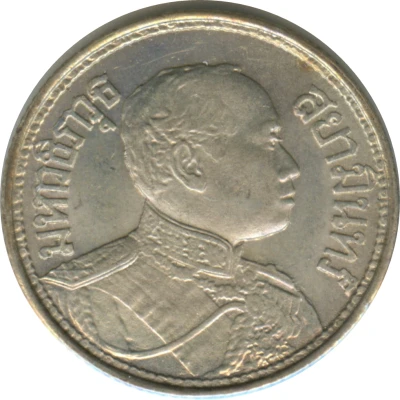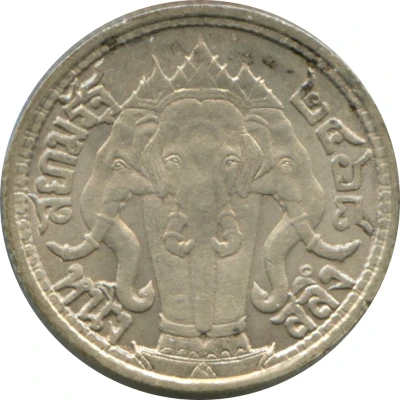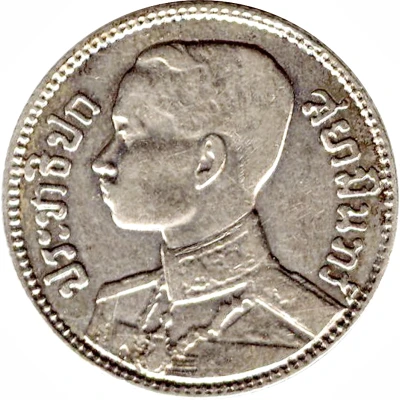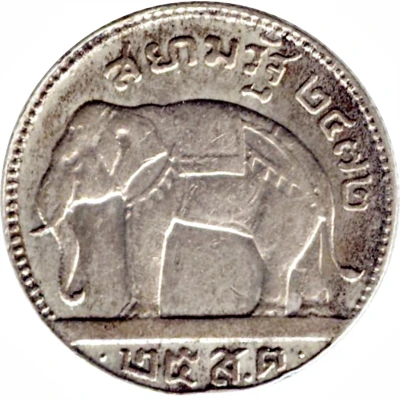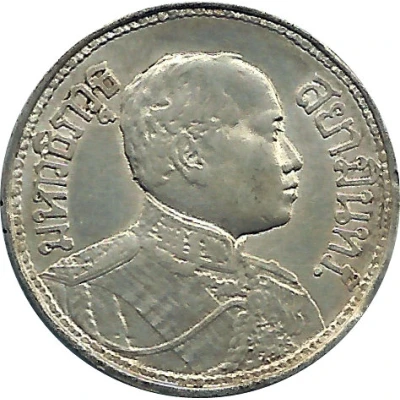
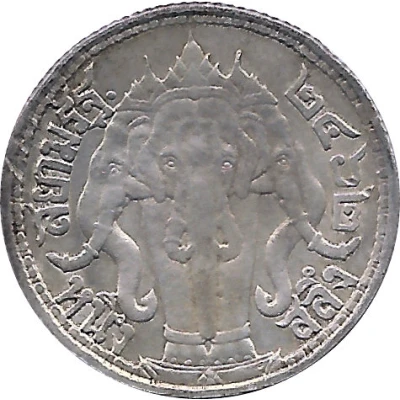

© Serf Media
1 Salung - Rama VI with dot after legend
2462 (1919) year| Silver (.500) | 3.70 g | 20.15 mm |
| Issuer | Thailand |
|---|---|
| King | Phra Mongkut Klao (Rama VI / Vajiravudh) (1910-1925) |
| Type | Standard circulation coin |
| Year | 2462 (1919) |
| Calendar | Thai |
| Value | 1 Salung (1 สลึง) (0.25 THB) |
| Currency | Baht (1897-date) |
| Composition | Silver (.500) |
| Weight | 3.70 g |
| Diameter | 20.15 mm |
| Thickness | 1.50 mm |
| Shape | Round |
| Technique | Milled |
| Orientation | Coin alignment ↑↓ |
| Demonetized | Yes |
| Updated | 2024-10-08 |
| Numista | N#114035 |
|---|---|
| Rarity index | 78% |
Reverse
Three headed elephant Airavata, front facing, surrounded by inscriptions.
Script: Thai
Lettering:
สยามรัฐ. ๒๔๖๒
หนึ่ง สลึง
Translation:
State of Siam [B.E.] 2462
One Salueng
Edge
Reeded
Comment
Due to rising price of silver after WWI, the government has to reduce the content of silver again to 50%, fearing that people will melt the coins for silver and export it. The mint added dot after the inscriptions of both obverse and reverse to distinguish from the previous ones.
However, the after price of silver drop, fearing that people will counterfeit the coins with just 50% of silver, the government switched back to 65% silver until the end of the reign.
Interesting fact
One interesting fact about the Standard circulation coin 1 Salung - Rama VI (with dot after legend) 2462 (1919) from Thailand is that it was minted during a time of great change in the country. King Rama VI, who ruled from 1910 to 1925, was instrumental in modernizing Thailand and introducing many Western-style reforms. This coin, which features the king's image on one side and a Thai character on the other, was minted during a period of significant economic growth and cultural exchange between Thailand and other countries.
